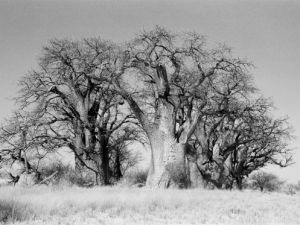What Kind of Trees Have Roots That Damage a Side Walk?
Any tree’s root structure can do damage to walks if the structure poses a barrier to the plant’s survival. In addition to providing support for a growing leaf canopy, aging trees must compensate for depletion of nutrients directly underneath the tree, so they grow new roots outward near the surface of the soil to find new nutrients and collect moisture.
Shallow Roots
As the tree’s crown the branching structure under its leaf canopy grows larger, its underground structure of roots must grow, both to find moisture and nutrients and to support all of the weight above ground. Heart roots — the main support roots for many trees such as elms and maples – grow away from the trunk. The heart roots spread out while staying near the surface, sprouting threadlike roots that gather moisture and nutrients. These roots grow downward only as long as they find water, so unless there’s a high water table or city water and sewer system underground, tree roots have little need to grow more deeply than 18 inches. Occasionally, roots will even grow above ground when wet, heavy soil or rainy, foggy weather encourage them to become “superficial.
Subsidence
Maple (Acer spp.), ash (Fraxinus spp.) and poplar (Populus spp.) trees all grow wide, fibrous root systems. As the roots grow, older sections of roots become woody, just as happens in the tree trunk and branches above ground. Nutrient-gathering takes place primarily in the ever-expanding root tips, or meristems. When roots grow under a solid surface, they absorb moisture and the dry soil contacts. Whatever is above must settle downward in a process called subsidence. As more roots crowd the soil, seeking moisture, their growing volume can push upward, stressing overlying concrete in the opposite direction. As more soil is scoured out by roots, the cycle repeats itself until eventually, the concrete fractures.
Placement
Trees with superficial roots that grow along the surface pose an additional risk to sidewalks and driveways. It’s difficult to tell where the trunk ends and the roots begin on a Moreton Bay fig (Ficus macrophylla); trees planted within 30 feet of pavement will eventually lift it. Plant maples and oaks well away from sidewalks, too; these large deciduous trees tend to grow over sidewalks as heart roots on the surface near the trunk thicken underneath them. These big trees can tilt concrete sections by pushing laterally as their trunks grow and their heart roots, growing thicker as they burrow underneath, lift one side.
Suckers
Some trees are simply not fit company for pavement because they send up new plants, called suckers, along the length of their roots. Sweetgum (Liquidambar styraciflua), eucalyptus and cottonwood (populus trichocarpa) can become invasive. Their roots dive under sidewalks but may set up suckers as they emerge on the opposite side, creating more roots to burrow under and crowd or create subsidence to stress the walk until cracks develop.



 Follow us on Twitter
Follow us on Twitter Follow us on Pinterest
Follow us on Pinterest Greene Tree Care provides expert, professional results for your trees and plants. Our tree trimmers and arborists provide top-notch care that exceeds most of our competitors.
We offer all tree services such as tree trimming, tree removal, stump grinding, cabling & bracing, 24 hour emergency service, pest management, and arborist reports.
We service trees throughout Ventura County, W. Los Angeles County and Santa Barbara County.
Multiple Year Winner of Angie's List "Super Service Award"!
Greene Tree Care provides expert, professional results for your trees and plants. Our tree trimmers and arborists provide top-notch care that exceeds most of our competitors.
We offer all tree services such as tree trimming, tree removal, stump grinding, cabling & bracing, 24 hour emergency service, pest management, and arborist reports.
We service trees throughout Ventura County, W. Los Angeles County and Santa Barbara County.
Multiple Year Winner of Angie's List "Super Service Award"!
